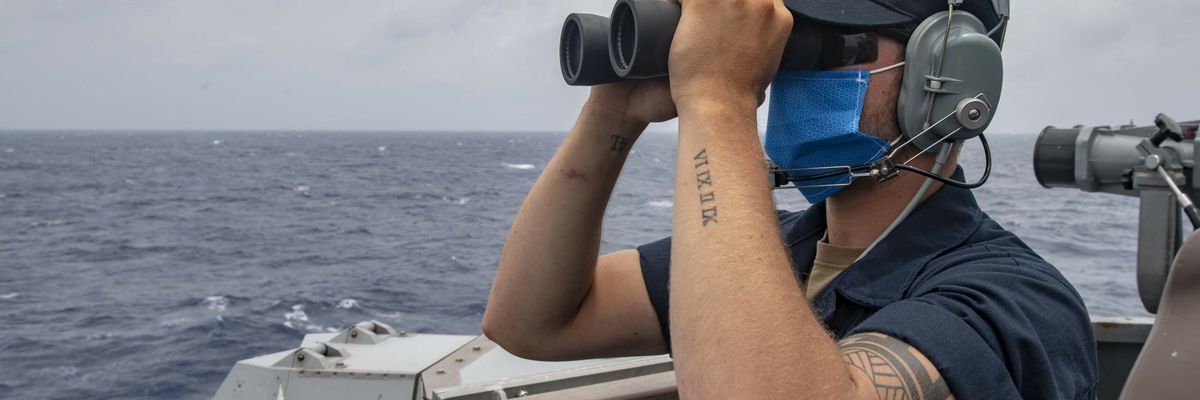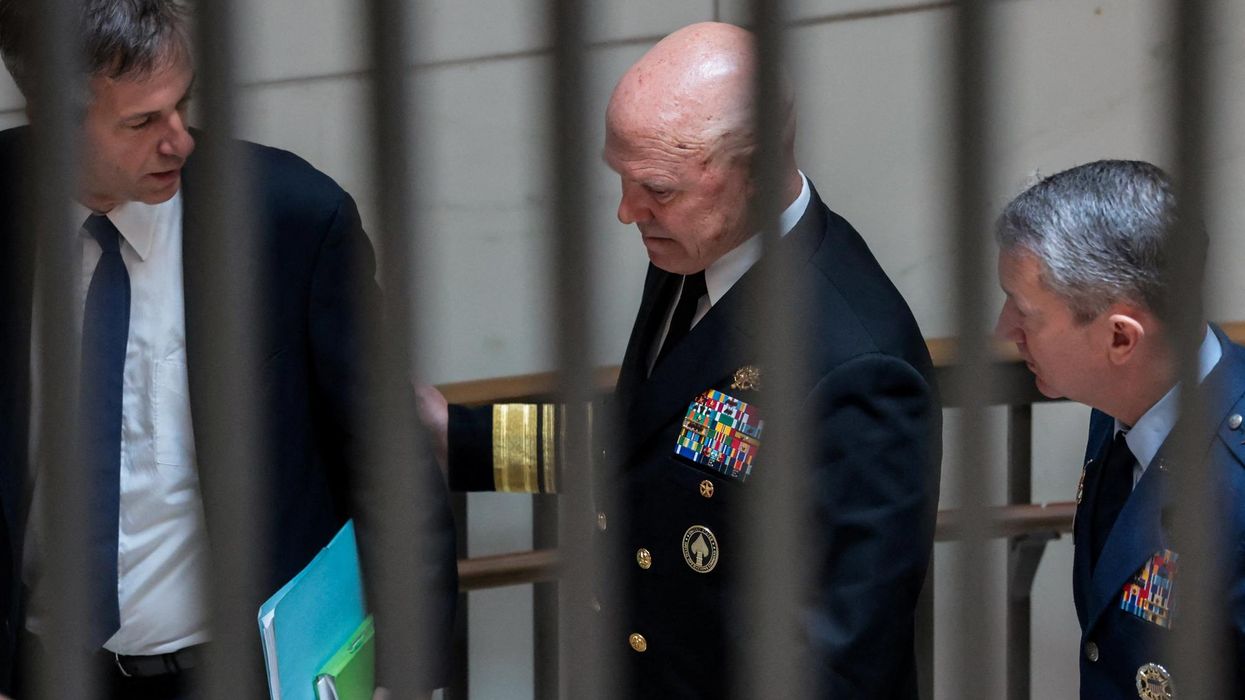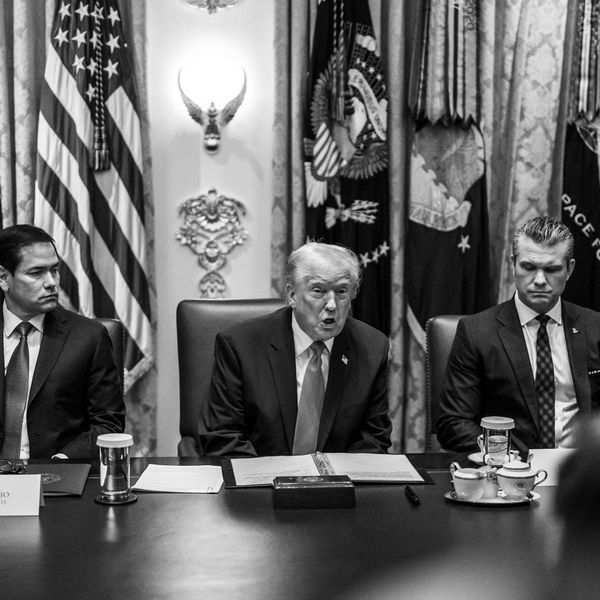Even as the Ukraine crisis continues to escalate, the security situation in Asia remains far from calm. However, the Biden administration’s recently-released Indo-Pacific Strategy is both disappointing and dangerous in the manner in which it doubles down on containing China. By doing so, the United States is enhancing the risk of great power war and missing a major opportunity to engender economic prosperity and tackle the existential threat of climate change.
The depiction of the relationship with Beijing presented in the two documents that spell out the strategy is almost entirely negative and zero-sum in nature. When China is mentioned directly, it is described as using all dimensions of its power to engage in “coercion and aggression” across the globe. It is cast as pursuing “a sphere of influence in the Indo-Pacific and seeks to become the world’s most influential power.” Beijing is supposedly committed to undermining international law and “transforming the rules and norms that have benefitted the Indo-Pacific and the world.”
The broad-brush, unqualified message conveyed is very clear: China presents a dire threat to the Indo-Pacific region and the world that must be countered on all fronts by the U.S and its allies and partners.
The Indo-Pacific Strategy makes no attempt to provide a vision or program for how an authoritarian China can coexist peacefully and productively with the U.S. over the long term, other than as a subordinate or compliant power. The document merely states that the U.S. objective “is not to change China but to shape the strategic environment in which it operates, building a balance of influence in the world that is maximally favorable to the United States, our allies and partners, and the interests and values we share.”
According to this approach, actually engaging with Beijing to reach understandings on a host of contentious issues from trade and investment to cyber norms and regional maritime disputes is apparently fruitless.
Moreover, there is no sign whatsoever in the Indo-Pacific strategy of an attempt at meaningful cooperation with China, most consequentially on solving the critically important climate problem. Other than a passing reference to working with China, there is no substantive discussion of how to actually engage Beijing in this critical area, whether in research and development, scientific and educational exchange, disaster relief, resilient infrastructure, or any of the other activities essential to combating the climate threat.
The document speaks of not having “the luxury of choosing between power politics and combating climate threats.” But — national resources being limited — prioritize we must, and it is clear which of these is the bigger threat to the United States. President Biden may talk of climate as the “existential threat,” but if the strategy is any guide to his thinking, he appears to be far more worried about the loss of U.S. domination in Asia than solving our planetary crisis.
On the critical issue of Taiwan, again the stress is on countering China’s threat, in this case by increasing the island’s self-defense capabilities, with the purpose of ensuring “an environment in which Taiwan’s future is determined peacefully in accordance with the wishes and best interests of Taiwan’s people.” While increasing Taiwan’s defense capacities to strengthen deterrence is certainly advisable, this strategy offers absolutely nothing on how the U.S. might credibly assure Beijing that it also remains committed to its long-standing One China policy.
To the contrary, in the Fact Sheet of the strategy, Taiwan is included in a list of “key strategic regional partners,” alongside India, Indonesia, Singapore, and others. The use of the adjective “strategic” resonates with the recent statement made by a senior U.S. Defense Department official that Taiwan is regarded as a key “strategic node” in Washington’s first island chain line of defense against China. The clear implication is that, given its strategic value, Taiwan must be kept separate from Beijing.
This assertion is in direct contradiction to Washington’s long-standing One China policy, which allows for any peaceful resolution of the issue, whether involving independence or unification. And yet the Indo-Pacific Strategy states that the U.S. position “remains consistent with our One China policy.” This mantra now rings almost entirely hollow, especially when combined with Washington’s ever-tightening ties with a Taiwan government that rejects any concept of One China.
Following this extreme depiction, almost the entire remainder of the Indo-Pacific Strategy is devoted to describing the many policies and initiatives that the U.S., with the support of its allies and partners, will undertake to oppose and even contain China (although Beijing is not explicitly mentioned in these sections, the intention is clear). These actions are all supposedly designed to “advance a free and open Indo-Pacific that is more connected, prosperous, secure, and resilient.”
Presumably, Beijing stands against these desired features of the region, although evidence in support of that supposition is highly mixed. Asian prosperity has been significantly driven by China’s rise, as has regional connectivity. And both the United States and China have contributed to the region’s deteriorating security.
When it comes to the wider region, the strategy speaks of “modernized alliances; flexible partnerships…a strong and reliable Quad,” as well as “a latticework of strong and mutually reinforcing coalitions.” These are only hints of what is spelled out more clearly later, namely a strategy of “integrated deterrence,” asserting that “we will more tightly integrate efforts across warfighting domains…to deepen our interoperability and develop and deploy advanced warfighting capabilities.”
This amounts to in effect two strategies for the wider region. With existing treaty allies, the United States is doing all it can to ensure that the spokes of its hub-and-spoke system of alliances are deeply integrated. Never mind that some allies, such as South Korea and Japan, are as distrustful of each other as they are of China.
With its partners, the apparent goal is to induct them into the U.S.-led military and security architecture so that they eventually become de facto allies. Various overlapping minilaterals are aimed to form the flexible “latticework” across the vast region, with the Quad and AUKUS groupings being the cornerstones of the new architecture. In a war scenario with China, each ally and partner will presumably have an assigned role in prosecuting the conflict.
Of course, the administration might counter that all this is necessary given the need to deter China. And that it is sensitive to concerns over escalation by not pursuing the goal of an “Asian NATO” in a complex region. Nevertheless, there is no denying that “competition” and “integrated deterrence” are the central watchwords in the strategy.
But when does deterrence become a provocation? And how much of the Indo-Pacific strategy is truly aligned with the region’s own goals and preferences?
Nowhere in the Indo-Pacific Strategy is there any recognition of the complex costs and benefits, opportunities, and dangers that China presents for Asian nations. It turns out that, apart from Australia and potentially Japan and India, Asian states are extremely reluctant to take on Washington’s China-containment project. The Quad has been received rather warily in Southeast Asia and South Korea. The U.S.-U.K.-Australia defense pact AUKUS has been criticized by Indonesia and Malaysia. Even India has recently demonstrated some limits as to how far it can go in riding the U.S. primacist tiger. No wonder no one is lining up to join the Quad, which in any case has largely been ineffectual on its public goods promises, and its de facto military exercise (Malabar) officially disowned likely at New Delhi’s behest.
It would be one thing if the administration’s Indo-Pacific Strategy had combined what might still be provocative actions on the military front with credible reassurances toward both China and the region. The strategy is however woefully short on any cooperative regional ventures that are not designed to undermine China. ASEAN centrality is mentioned and Southeast Asia is positioned as “central to the regional architecture.” But there is little detail on partnering with ASEAN on solving the region’s problems or designing a compelling economic strategy aimed not to coerce or sanction, but to attract.
Finally, in the economic realm, the total absence of any reference to the two existing trade and investment structures that span the region and beyond and that either include China (the RCEP) or to which China has expressed a desire to join (the CPTPP) is puzzling. We have heard references to the Indo-Pacific Economic Framework from the administration, and they are repeated in this document. But it provides no details on what is apparently intended to be one of the leading policy initiatives in Asia by the United States, and how it should relate to RCEP and the CPTPP. In discussing the Framework, the Fact Sheet talks mainly in the vein of rules and standards, but the demand in the region is for greater infrastructure, market access, trade, and investment.
By painting China in extremely adversarial, largely zero-sum terms, undermining the One China policy toward Taiwan, disregarding the strategic preferences of the vast majority of the region’s states, failing to include a detailed geoeconomic component that accounts for existing major structures in that realm, and inexcusably punting on embracing cooperation with China on the climate crisis, the Indo-Pacific strategy continues a dangerous trend in U.S. foreign policy, and enhances the risk of great power confrontation in our time.
















